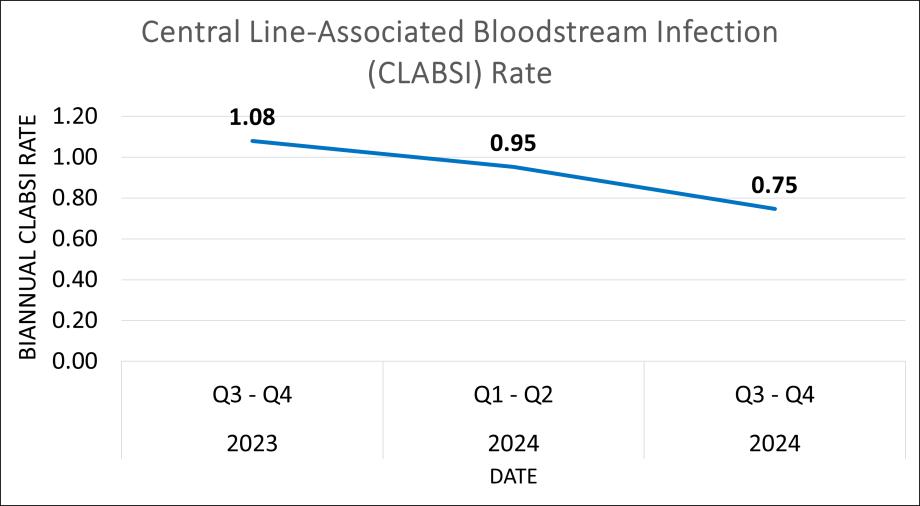Central Line Infections
Some patients need a type of intravenous (IV) line called a central line. This is a small tube that goes through the skin and into a large blood vessel. It is used to give IV medicine, nutrients, and fluids. Patients who have central lines are at risk of infection because of the opening in the skin. If a line gets infected, it is called a central line-associated bloodstream infection (also known as a CLABSI). It is very important for patients who have a central line to get what we call the “CLABSI bundle.” This “bundle” is a combination of items (such as gloves) and procedures (such as handwashing) that helps prevent infections.
How Are We Doing?
Our team is dedicated to making sure that central lines don’t get contaminated, and that they are in place only as long as they are needed. We keep track of how we are doing with the bundle and the number of CLABSIs we have throughout the year. The graph below shows our CLABSI rate, which means the number of infections we observed for every 1,000 days that patients had central lines at our hospital.

What You Can Do to Help
Patients and families are an important part of the care team. They play a role in lowering the risk of infections. The whole care team helps keep the patient and the environment as clean as possible to avoid contaminating the line. Some ways we do this are by:
- Daily baths with CHG treatment – special chlorhexidine gluconate wipes, called CHG wipes, are used to kill any germs on the skin that can lead to infection.
- Brushing teeth twice a day – to prevent infection entering the bloodstream.
- Daily linen change – sheets are changed once a day for patients with central lines when the patient is in the hospital.
We encourage our patients and families to speak with their providers if they have questions and to learn more about how they can help. We also encourage our patients and families to speak up if they ever have concerns about their central lines.